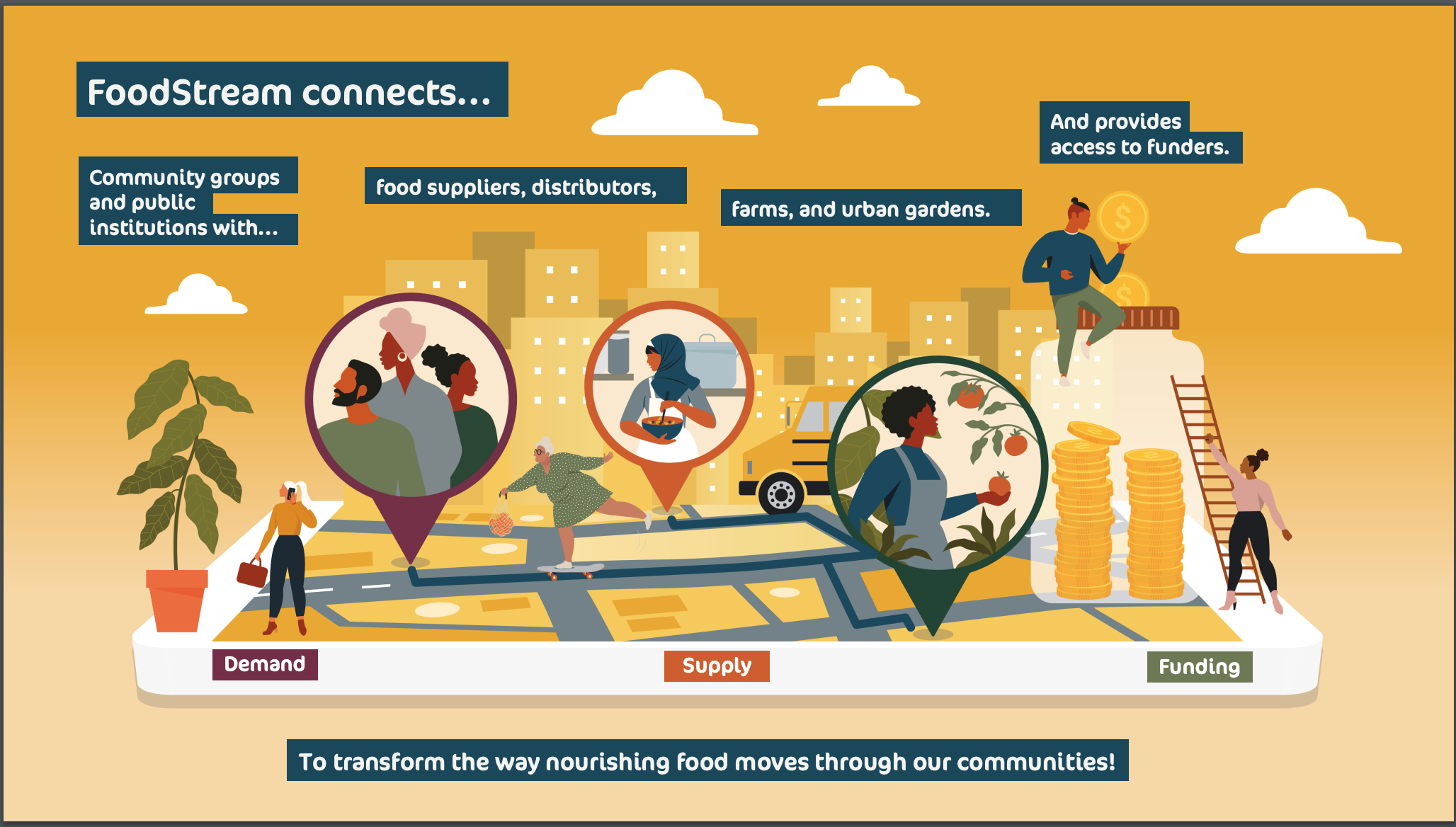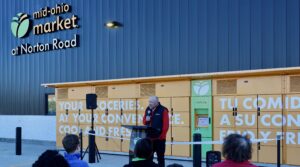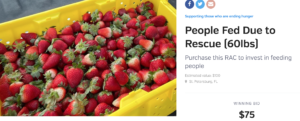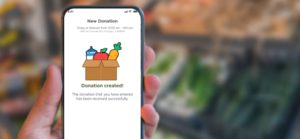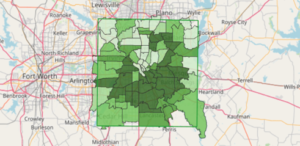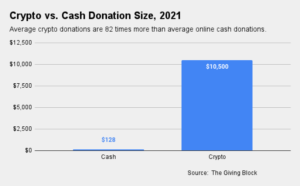Everyone has a story about what they did during the pandemic. Rich Cumming’s includes the closing of his events business, followed by his introduction of a technology platform designed to connect all the players involved in getting food to those who need it, within a local area.
At the pandemic’s onset, Cumming was tapped by a friend to help set up the New York City operations of World Central Kitchen, a nonprofit that serves meals in the aftermath of disaster. He got to work, using state funds to source fresh produce from local farms and get it to people in need, ultimately distributing 170,000 boxes. His wife, meanwhile, was working with World Central Kitchen in the Bronx, getting restaurants to create 2.2 million meals that got distributed to struggling communities.

New to the hunger relief world, the couple learned a lot about it along the way. “Our biggest pain point in all that was the connectivity,” Cumming said. “We realized there were so many amazing people doing so much effective, inspiring, impactful work around the problem of food sovereignty, but there was no one place for them all to exist and share resources and ideas.”
Cumming’s answer to that problem is FoodStream Network, a social network of sorts that lets entities with food, such as farms and restaurants, easily connect with local groups that can distribute it, such as food banks, food pantries and community groups. Donors and funders are also part of the ecosystem.
“FoodStream is like the LinkedIn of the hunger relief world,” Cumming said.
More than 300 restaurants, community groups and farms are already on the platform, and they say it is helping them accelerate the process of finding partners and exchanging food. Having a list of farms approved by the state to grow food for hunger relief, for example, replaces the many excel spreadsheets Cumming was forced to manage during the height of the pandemic.
Recent FoodStream connections include a public elementary school in the Bronx with a nearby pantry to support a food giveaway on the first day of school and weekly pop-up farmer’s markets. When a fire in Queens displaced about 200 families, FoodStream facilitated funding to activate nearby restaurants to cook meals for them. Sometimes the connections are barters, such as a pantry donating three boxes of fresh produce to a restaurant in exchange for 100 meals.
“We are enabling transactions between restaurants, farms, community groups and funders,” Cumming said.
FoodStream recently announced that City Harvest, New York City’s largest food rescue organization, would use the platform to help its 400 or so agencies improve their day-to-day operations and ability to connect with partners and donors. “There is so much value in this networking site,” said Raffaella Glasser, City Harvest’s Network Capacity Manager, in a press release.
Also working in FoodStream’s favor is New York State’s 2022 budget, which includes a $25 million grant program to support restaurants that provide meals to distressed and under-represented communities. The FoodStream platform offers the ability to search for restaurants by address and key word, facilitating searches for culturally relevant food.
“You’re more likely to get culturally relevant meals prepared for the community if you work with the restaurant on the community’s doorstep,” Cumming noted.
Similarly, FoodStream is reaching out to the BIPOC farming community to add minority-led farms into the network. “We’re opening up a stream of culturally relevant food that’s being produced by these BIPOC farms for the BIPOC community,” Cumming said.
FoodStream’s effort is not to be confused with other networking sites, such as Feeding America’s MealConnect platform, Cumming said. MealConnect lets Feeding America food banks coordinate donations from local businesses and grocers, and recently added the ability to connect with farmers for produce rescue. In September, Feeding America announced that MealConnect had facilitated 3 billion pounds of food rescue since its launch in 2014.
Entities like MealConnect would plug into the FoodStream platform as a member, Cumming explained. “We provide the technology that enables these entities to have a profile page, visibility of what they do and need to be successful, and be able to connect with one another,” he said.
He added, “Instead of coming up with another solution to help get food to people, we came up with a solution that enables all the people doing these wonderful things to connect.” — Chris Costanzo
Like what you’re reading?
Support Food Bank NewsConnect with Us:
